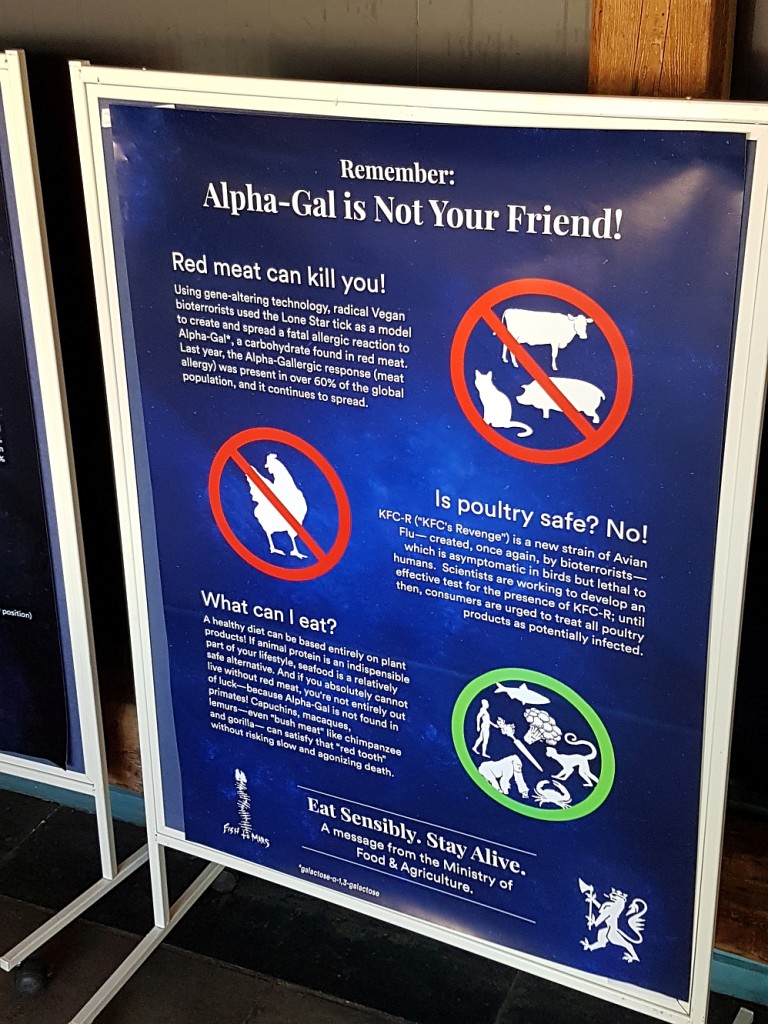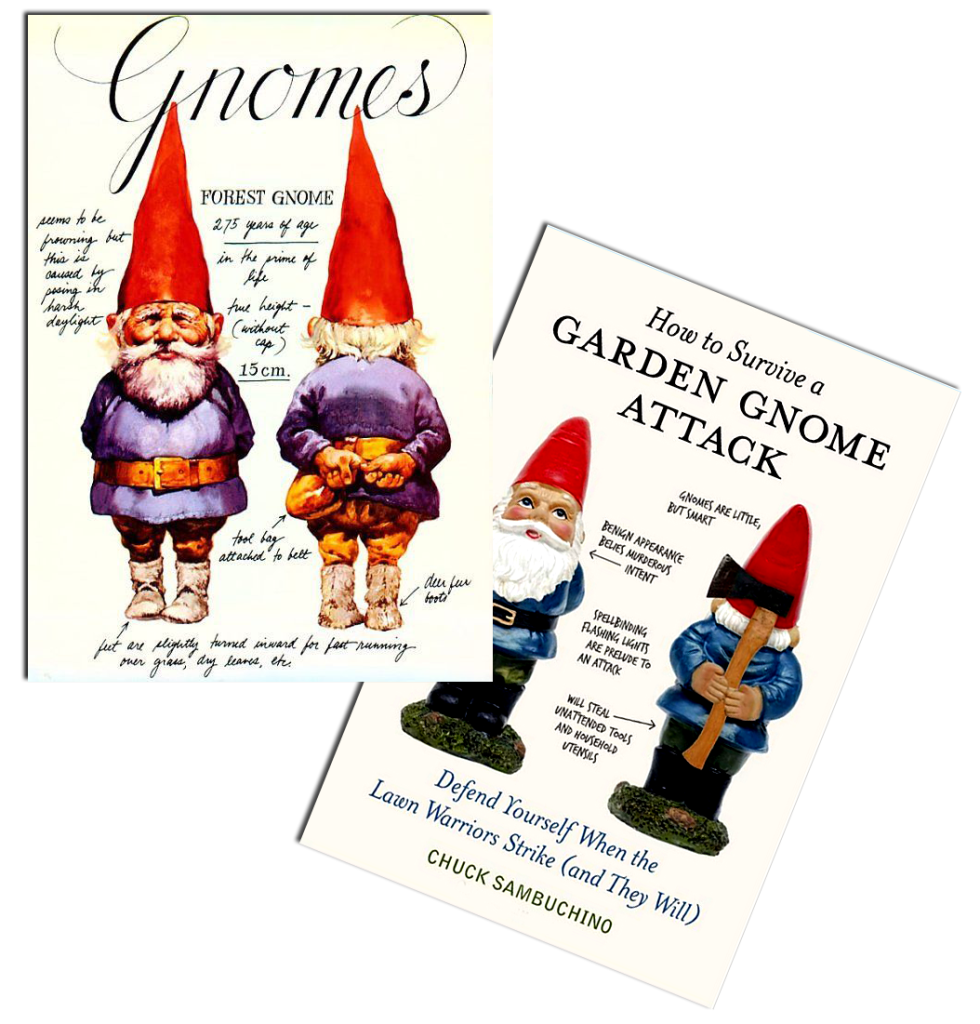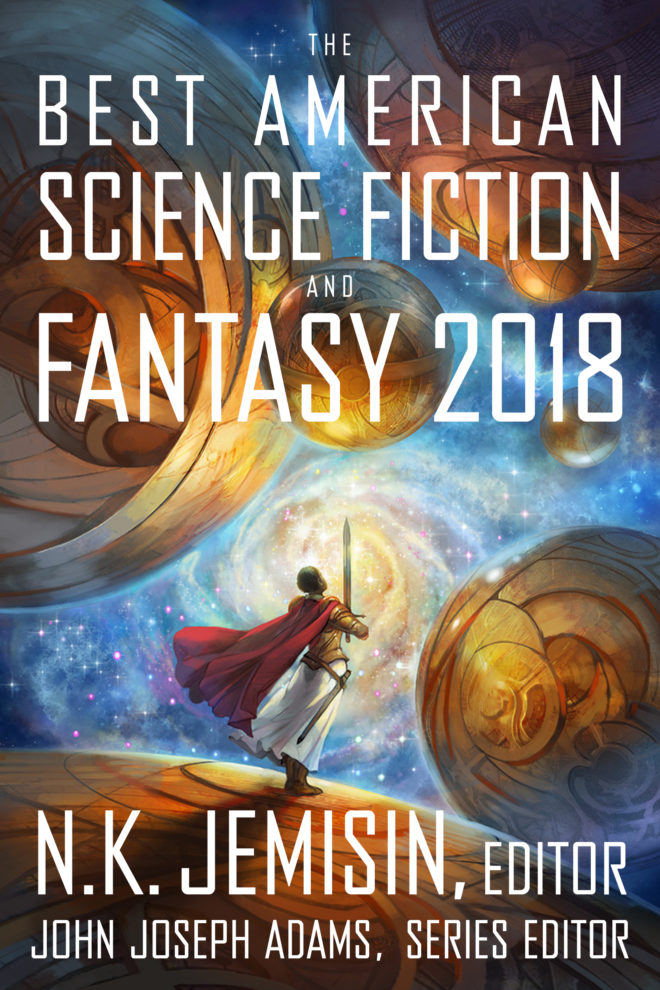N.K. Jemisin, Alpha Gal
…and picking right up from where we left off last week, some of you may remember an ancient post about the Lone Star Tick, whose bite can provoke a fatal hyperallergenic reaction to “alpha-gal” (galactose-alpha-1,3-galactose for the pedants in the audience), a monosaccharide found only in the meat of nonprimate mammals. You may remember cool scenarios in which vegan terrorists gengineer this reaction into biting insects of all sorts, spreading it worldwide and forcing human meat-eaters to choose between giving up meat or eating each other (basically, win-win either way). And if you are lovers of the opera, you may even remember this poster off to the right, a PSA I put together as one of the world-building elements of “Fish To Mars”.
All ancient history now. But alpha gal is the gift that keeps on giving. Just last month, The New York Times published an update on this tick-borne malady (cleverly illustrated with emoji-faces built out of veal cutlets and sausages) which made an interesting claim indeed:
“OUR DISTANT ANCESTORS once made alpha-gal. Understanding why humans don’t could shed light on the meat-allergy mystery Like other mammals, South American monkeys produce alpha-gal. Only Old World monkeys and apes (and humans) have lost the ability to make the sugar. Hence scientists deduce that the change most likely happened after New and Old World primates diverged from each other around 40 million years ago. One explanation for the disappearance of alpha-gal is that it was driven by some catastrophe, a deadly infection that afflicted Old World primates, perhaps, and as a result maybe these distant relatives of ours stopped being able to produce the sugar because doing so conferred an evolutionary advantage. The mutation that eliminated alpha-gal could have improved a primate’s ability to fight off an infection by enabling its immune system to more easily distinguish between its own body and some pathogen with alpha-gal.”
…and I can’t help thinking Hey, didn’t Blindopraxia’s vampires and their protocadherin dependency end up at the same point, but for opposite reasons? Both vampires and a post-tickular Humanity resort to eating fellow primates— but one does so because no other prey contains a vital substance, while the other does so because all other prey contain a toxic substance.
It’s almost too symmetrical.
So now, I’m thinking we might have an origin story for vampires. Maybe what bootstrapped the subspecies was an epidemic, something like this postulated alpha-gal pathogen but more recent. Something that knocked out protocadherin synthesis in a small, isolated population of hominins, most of which— having survived the epidemic— found themselves dying off for lack of that necessary protein. All but a few dispersers, who made it out of their isolated refuge and back into the mainstream where their unsuspecting cousins bred and fed, all unsuspecting…
Don’t really know yet how that might fit into the overall plot. Just starting to think about it. Maybe no more than a bit of background ambiance, throwaway background for readers to geek out over if so inclined. Or maybe something more— because once you know how vampires originally got made, you’re one step closer to being able to unmake them…
Or I might just try to resurrect my idea for the big glossy hardcover Coffee Table Book— The Proceedings of the Second Biennial Conference on the Biology and Evolution of Vampires— that I always wanted to pattern after that big best-selling tome on the natural history of Gnomes that was all the rage back in the seventies. The book that has, so far at least, never failed to make agents and editors alike roll their eyes and tell me to fuck off when I pitch it to them…
*
Some of you are probably wondering how N.K. Jemisin fits into all of this.
She doesn’t exactly. Not into the vampire stuff anyway, although I suppose if you were given to terrible puns you could call her an Alpha Gal in her own right (what with three consecutive Best-Novel Hugos and all). But she is the editor of the 2018 Edition of Houghton Mifflin Harcourt’s Best American Science Fiction and Fantasy, and she did think enough of “ZeroS” to include it in that volume. And HMH let us off the leash just yesterday, and encouraged us to announce it to all and sundry. So, as a postscript, that is what I’m doing.
That’s four best-of-year collections “ZeroS” has made it into, which is nice by any standards. At the same time, the other three are edited by folks I’ve known and dealt with in the past. So it’s especially nice to have made it onto Jemisin’s radar— and if I might drop one more name, it’s also humbling to end up in the same Table of Contents as Samuel Delany.
I’ve been trying to write like that guy since I was a teenager.











But we’re still ok to eat all the vegans, yes? Asking for a friend.
That’s great, Pete. So cool to think you and N.K. will cross paths. You’re two of my favorite authors.
And “ZeroS” is one hell of story, no doubt. Sticks in your head long afterward.
Plus a Blindsight vampire origin story? This is a good day. I hope I don’t unplug from the machine.
Damn, how the hell did I miss that story the first time around. I must be slipping. Great stuff, Peter!
All the selections in the Best American Science Fiction and Fantasy volumes are made by blind reads by the editor (from an initial selection of I think 80 stories by J J Adams), so “ZeroS” made the cut on sheer storytelling chops.
> The Proceedings of the Second Biennial Conference on the Biology and Evolution of Vampires— that I always wanted to pattern after that big best-selling tome on the natural history of Gnomes that was all the rage back in the seventies. The book that has, so far at least, never failed to make agents and editors alike roll their eyes and tell me to fuck off when I pitch it to them…
This really feels like the kind of book that doesn’t even begin to happen unless you write a couple of pages, get drunk with the right artist at a con, and convince them to do a couple illustrations on spec well enough that they still think it sounds like fun when they sober up.
(This is not me volunteering, I don’t think I’m the right artist for it. It’s gotta be someone who can capture the right mood the way Poortvliet could make being a gnome look cozier than you could ever imagine.)
Samuel R. Delany! I would have never guessed you as an admirer, your styles and subject matters look so different to me — at least at first thought.
“(galactose-alpha-1,3-galactose for the pedants in the audience), a monosaccharide”
A disaccharide, if I’m not mistaken. (Sorry for extra pedantry.)
I’m not sold on the vampire origin story, but maybe that’s because there isn’t much here for me to sink my teeth into. At any rate, whether I’m sold on it or not doesn’t really matter, does it?
If you even self-published The Proceedings, though, I would buy three of those in a heartbeat, and that isn’t casual exaggeration. Well, the “in a heartbeat” part is, but not the triple purchase. One for me, one for my partner, one for…I don’t know yet, but I’d find somebody to gift it to, or maybe just keep it as a spare.
Meat eaters won’t eat each other, they will eat vegetarians. Cannibalism is on the way, as fast human brain-mutants are replacing oldschool slow DNA-mutants. For a while, we’ll keep cows, pigs and such, but then, in each catastrophe or war, we’ll save our fellow humans first. Which means, cannibals will have enough advantages in each local bottleneck to slowly dominate the population. The first bite is desperation, the second habit, the third, your God-given right. I volunteer as breeding bull: I’m big, tasty, nonviolent in the physical world, and have a strong immune system.
Ain’t it funny, how a fairy tale like vampires and gnomes gets more and more realistic, the more data you have to choose from? Sooner or later, you’ll be able to make a living one in a lab. If I had a clue about Darwinism, I’d say, I see evolution at work. I’d say, I see competing information chunks fighting for survival, matter becoming life within a protected environment, the human brain. There, they can combine, grow stronger, until they find an opportunity to get out. And they procreate, spread copies of newly formed, larger chunks from head to head, as you do now. From a vampire’s point of view, you’re proto-sperm.
Of course, in your case, they might turn out as gnomepires. But this mutation will need to adapt to the fantasies of teen girls that dominate the primordial neural ocean in which they’ll have to survive. Gnomes as vampire babies? Cute little lawn ornaments, evolving into friendly, child-like appearances to attract buyers… covered with protective ceramics, turning to dust when it breaks (even at night – you don’t want to find a monster in your decoration), waiting in stasis, until Mom and Dad call for dinner? Then, it’s chaos in suburbia…
Sounds crazy, but someone might want to simulate this in a computer. Work out the bugs. You’ll have a mind, waiting for a body. Whatever body comes, they’ll have to adapt to each other, and to the reality they find. There’s enormous potential for horror stories in the “game software gets into robot/cyborg/manipulated life†scheme. And they won’t be fantasy, they’ll be hard sci-fi.
The monsters have a womb now. Us.
Well, at least they won’t have to resort to cannibalism.
Ivo,
I’m interested in what way, precisely, do you perceive their style and subject matter as different? Not disagreeing, I just want to know your perspective.
Krum,
OK, you asked for it 🙂 This is off the top of my head, it’s not as if I did any deep comparative analysis or even consulted any works to make sure I’m not talking out of my ass. So yeah, it’s just my overall impression.
Starting with the subject matter, and with the obvious: while our esteemed host is definitely a practitioner of hard SF™, Delany is more of a space opera guy, often wandering into fantasy territory. Peter’s (may I say “Peter”?) sources of inspiration are modern biology and physics, as he so kindly documents on this very blog here. Delany’s muses are mythological and social: the interpretation of the Greek myths (The Einstein Intersection), the semiotics of tarot cards (Nova), the intricate social interactions and urban myth-making of Dhalgren, etc. I think at some point he was very much into the postmodern deconstructionism of Jacques Derrida (the Neveryon series?). Once, in my fanboysh youth, I had translated from English into Italian a fragment of Tales of Neveryon, the “Tale of Jevim and Eif’h”, which if I remember correctly is a feminist retelling of the creation myth in Genesis. So yeah, more of a humanist than a scientist.
(A flashback: I remember, as a math undergraduate student, trying hard to get into Derrida’s convoluted writings, after seeing them quoted at length by Delany, who was then my favorite writer. Despite my best efforts it all felt an awful lot like a pile of nonsense to which I could at best ascribe some literary value; but hey, it did inspire Delany, right? So Derrida wasn’t that useless after all, although his reasoning made me want to throw his book through the window.)
Even at his Hardest™, as with his masterful riff on the Sapir-Whorf hypothesis (Babel 17), Delany’s protagonist is a poet and a badass starship captain, not a scientist, and the novel is as much preoccupied with the colorful human fauna of the future galaxy as with the precise mechanics of the linguistics on which the plot hinges.
As for the styles: Peter’s writing style is as tense as a steel cable bearing the weight of the hard, polished, precise facts on which he builds his stories. In contrast, Delany’s is voluptuous, indulgent, often sensual, full of vague and evocative images. I find Peter’s imagery, like his words, more precise and thus less poetic.
There is some similarity: both write elliptically. But in different ways: Peter with the confidence of the mathematician who leaves out most details from a theorem’s proof, leaving them as an exercise for the reader. Delany, with the flare of the impressionist painter who sketches his figures in broad, bold brush strokes, trusting the viewer to fill in the details. Both can write beautifully intense prose.
I can’t speak to the difference in science/humanities— I suspect you’re right about that— but I’ve always loved Delany’s prose. That’s the stuff I’d emulate if I could. (Hell, I’ve still got a copy of “The Jewel-Hinged Jaw” on my bookshelf, taught me a fair bit about the craft).
Of course, I haven’t yet steeled myself to get into his more recent 800-page snot-eating tome. I’m sure it’s brilliant, but— well, not today.
I haven’t read much of his recent stuff, which seems to be mostly non-sf, smutty (snotty?) and/or autobiographical. There were parts of Neveryon like this and I didn’t like them.
But if you meant “Dhalgren” (800 pages, check! snot-eating… er, possibly; more recent, in 1975?) then you should give it a try and see if it sucks you in. It contains some of his best writing.
NB: I keep hearing good things about “The Jewel-Hinged Jaw”, and you just tipped me into ordering it.
Ivo,
Can I quote this on Samuel Delaney’s facebook profile? He might be interested by the comparison, and I’m interested what he might reply.
God, no, I loved Dhalgren. Never had a clue what was actually going on, but it stuck with me like an STD. I’ve never read anything like it, and yes, the prose was (as usual) gorgeous. (I spent the longest time wondering if Bowie was referencing it throughout Diamond Dogs, before I finally checked and found that the timing was wrong.)
The snot-eating book is Through the Valley of the Nest of Spiders. 2012. By all accounts a difficult book, which doesn’t mean I shouldn’t read it of course.
Unlike Dhalgren, it was not a bestseller.
Was Through the Valley of the Nest of Spiders published as far away as 2012? I remember anticipating it for years. I have not yet read it, I guess procrastinated for so long.
Mikhaila Peterson had an extreme form of an autoimmune
disease. Symptoms include depression and joint inflammation. It was so
bad that it lead to a hip replacement at a very young age.
Now she claims her symptoms vanished, including depression, when she
stopped eating everything but meat and greens, and later stopped
eating even the greens, leading to further improvement.
She and her father, Jordan Peterson, who also had some autoimmune
problems, including depression, are now on a pure meat diet.
Now imagine adding this alpha-gal allergy into the mix.
To be honest, if I were in their shoes, being allergic to everything
but meat, and then, on top of that, the victim of a vegan terrorist
act, I would skip monkey meat and base my diet purely on vegan meat.
(an interview about depression and their very restrictive diet:
https://www.youtube.com/watch?v=A6g_geYeL4U)
Krum,
Sure, go ahead! And I’d like to know if you get any reaction.
Peter Watts,
Ah, good. I’m glad you loved Dhalgren. Rather than not knowing what was going on at any given time, for me it was more about not knowing how to piece together the various parts in a coherent whole. A bit like in Gene Wolfe’s “The Fifth Head of Cerberus” or “The Book of the New Sun”, where the possible interpretations keep shifting in my head, pulled in different directions by the various parts of the story. Each seemingly contradictory part is too cool to be abandoned, so I end up with them all coexisting in my head in some narrative quantum superposition.
After I originally commented I appear to have clicked on the -Notify
me when new comments are added- checkbox and from now on every time a comment is added I receive
four emails with the same comment. Perhaps there is an easy method you are able to remove me from that service?
Cheers!